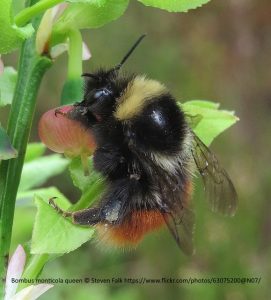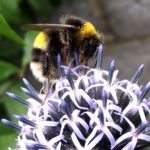


- Like the honeybee, bumblebees are social bees. They live in colonies with a queen, many female workers, and some males.
- Ireland has 21 native bumblebee species. Of these, 6 species are cuckoo bumblebees. These cuckoo species don’t make their own nests, but instead lay their eggs in the nest of a true bumblebee who will inadvertently bring up their young.
- As with all bees, only the females can sting! Female bumblebees can sting more than once. Bumblebees are not at all aggressive and are interested only in collecting pollen and nectar.
- Four of Ireland’s bumblebees are endangered and 2 are vulnerable. The Great yellow bumblebee is on the verge of extinction from Ireland.
- Bumblebees are more primitive and don’t make honey like honeybees. Instead they store a little bit of nectar in wax nectar pots in their nests for emergencies. This means that a bumblebee colony is never more than a few days away from starvation, making Ireland and its climate a challenging place to live!
- Using DNA extracted from a tiny portion of bumblebees legs, researchers identified a new Irish bumblebee species in 2007. It is called the Cryptic bumblebee, Bombus cryptarum.
- Bumblebees can travel up to 5km to feed but commonly forage within 1km of their nest.
- Bumblebees have very powerful wing muscles. They have evolved a special adaptation that allows them to decouple these muscles from the wing. This allows them to use the wing muscles to generate heat and then reattach them before flying off.
© 2024 All-Ireland Pollinator Plan | Web Design Vitamin Studio



